Step-By-Step Guide: 15 Specialty Painting Processes

Key Features:
- Comprehensive Step-by-Step Guide: The article provides detailed instructions for each step of the painting process, ensuring readers can achieve professional results on their brick walls.
- Material Recommendations: It offers specific recommendations for materials, including types of brushes, rollers, primers, and paints, to ensure the best outcomes for different surfaces and conditions.
- Maintenance Tips: Includes tips on how to maintain the painted brick wall, such as regular cleaning and touch-ups, to keep it looking fresh and vibrant over time.
How do I paint a brick wall?
Painting a brick wall can dramatically change the look of a space, adding a fresh, updated appearance. Here’s a comprehensive guide to help you paint a brick wall effectively.
Step-by-Step Guide
1. Preparation
Materials Needed:
- Wire brush or stiff-bristled brush
- TSP (trisodium phosphate) cleaner or a mild detergent
- Water
- Drop cloths
- Painter’s tape
- Primer (masonry or bonding primer)
- Paint (preferably elastomeric paint for its flexibility and durability)
- Paintbrushes, rollers, or a paint sprayer
- Safety gear (gloves, goggles, and a mask)
Steps:
- Clean the Surface: Start by thoroughly cleaning the brick wall. Use a wire brush to remove any loose dirt, dust, or efflorescence (white, powdery deposits). Then, wash the wall with TSP cleaner or a mild detergent solution to remove any grease or grime. Rinse well and allow the wall to dry completely.
- Repair Damages: Inspect the wall for any cracks or damages. Fill any cracks or holes with acrylic caulk or masonry patching compound. Allow the repairs to dry completely.
- Protect Surrounding Areas: Use drop cloths to cover the floor and any nearby furniture. Apply painter’s tape around windows, doors, and trim to protect them from paint splatters.
2. Priming
Choose the Right Primer:
- For bare brick, use a masonry primer or a bonding primer. If the wall has been painted before, a general-purpose primer can be used.
- For surfaces that may have moisture issues, a primer with mildew resistance is advisable.
Application:
- Apply the primer using a roller or a paint sprayer for even coverage. Use a paintbrush to reach any crevices or textured areas. Allow the primer to dry according to the manufacturer’s instructions.
3. Painting
Choose the Right Paint:
- Elastomeric paint is an excellent choice for painting brick as it can expand and contract with the surface, providing durability and resistance to cracking.
Application:
- First Coat: Use a roller to apply the paint evenly across the surface. For textured bricks, a paint sprayer might be more effective to ensure all crevices are covered. A paintbrush can be used for detailed work or touch-ups.
- Second Coat: Allow the first coat to dry completely before applying a second coat. This helps to achieve a uniform finish and ensure better durability.
4. Finishing Touches
- Inspect and Touch Up: After the second coat is dry, inspect the wall for any missed spots or uneven areas. Touch up as necessary.
- Remove Painter’s Tape: Carefully remove the painter’s tape before the paint fully dries to avoid peeling off any paint with it.
Maintenance Tips
- Regular Cleaning: Gently clean the painted brick wall periodically with a mild detergent and water to keep it looking fresh.
- Touch-Ups: Keep some leftover paint for touch-ups in case of chips or scratches over time.
Considerations for Using Elastomeric Paint
Benefits:
- Flexibility: Elastomeric paint can expand and contract with the brick, preventing cracks and peeling.
- Durability: It offers excellent resistance to weather conditions, making it ideal for exterior brick walls.
- Waterproofing: Provides a waterproof barrier, protecting the brick from moisture damage.
Disadvantages:
- Application: Requires more careful application to ensure even coverage and to avoid trapping moisture underneath.
- Cost: Typically more expensive than standard exterior paints.
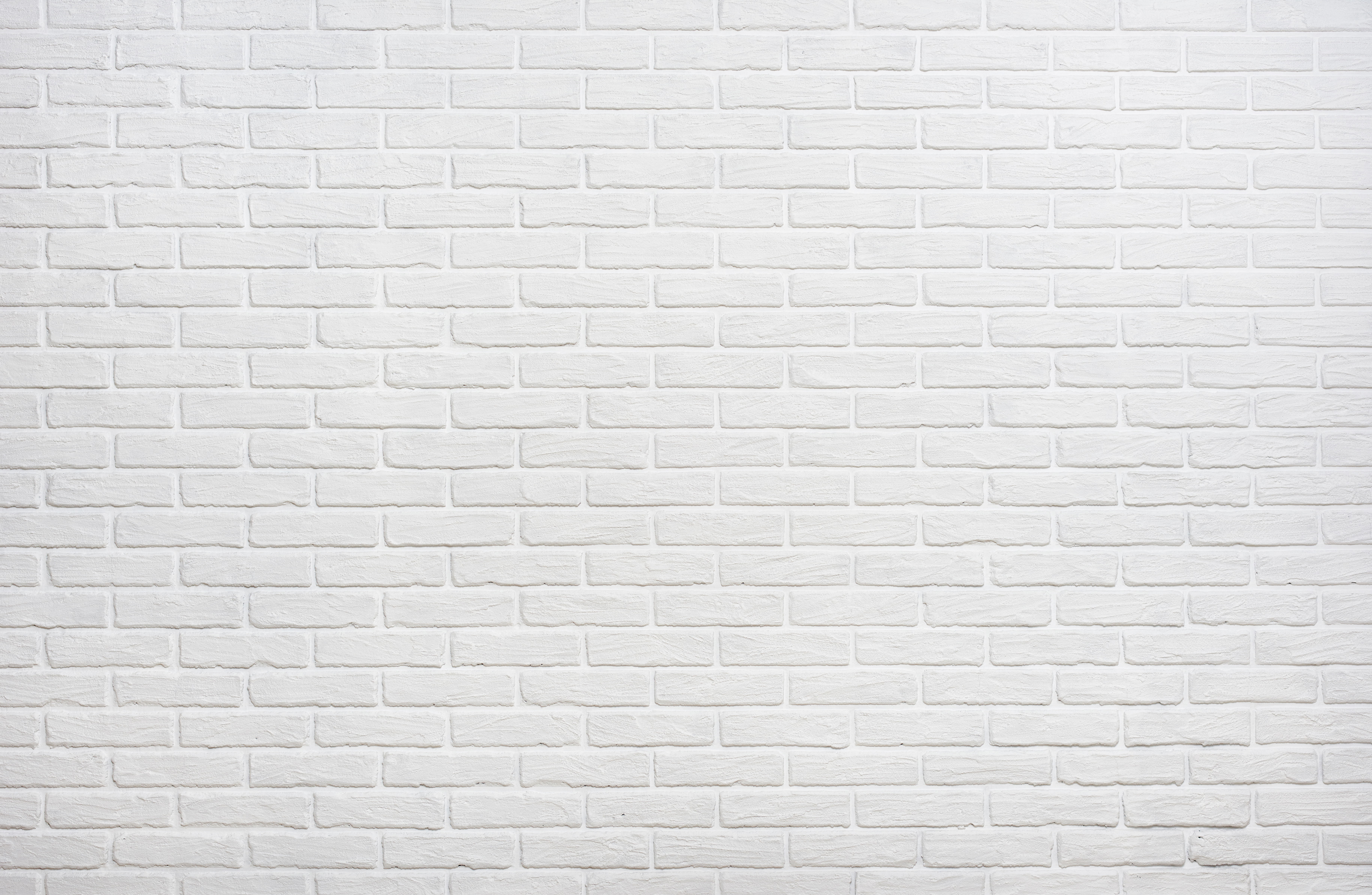
How do I paint a metal surface?
Painting a metal surface can not only improve its appearance but also protect it from rust and corrosion. Here’s a comprehensive guide to help you achieve a professional finish.
Step-by-Step Guide
1. Preparation
Materials Needed:
- Wire brush or sandpaper (medium to fine grit)
- Degreaser or mild detergent
- Water
- Drop cloths
- Painter’s tape
- Primer (metal primer, rust-inhibiting for ferrous metals)
- Paint (acrylic, oil-based, or enamel)
- Paintbrushes, rollers, or a paint sprayer
- Safety gear (gloves, goggles, and a mask)
Steps:
- Clean the Surface: Start by thoroughly cleaning the metal surface to remove any dirt, grease, or grime. Use a degreaser or mild detergent and rinse well. Allow the metal to dry completely.
- Remove Rust and Old Paint: Use a wire brush or sandpaper to remove any rust, loose paint, or other imperfections. If the metal is heavily rusted, a rust converter might be necessary. For previously painted surfaces, sanding ensures better adhesion of the new paint.
- Smooth the Surface: Sand the entire surface with medium to fine-grit sandpaper to create a smooth base for the primer. Wipe away any dust with a damp cloth and let it dry.
- Protect Surrounding Areas: Use drop cloths to cover the floor and any nearby items. Apply painter’s tape to protect areas that shouldn’t be painted.
2. Priming
Choose the Right Primer:
- For bare metal, use a metal primer that’s designed for adhesion and rust prevention.
- For previously rusted areas, a rust-inhibiting primer is recommended.
Application:
- Apply the primer using a paintbrush, roller, or paint sprayer. Ensure an even coat, covering all areas of the metal surface. Allow the primer to dry completely according to the manufacturer’s instructions.
3. Painting
Choose the Right Paint:
- Acrylic paint is good for flexibility and resistance to chipping.
- Oil-based paint offers durable, long-lasting protection.
- Enamel paint provides a hard, glossy finish that’s ideal for high-traffic areas.
Application:
- First Coat: Apply the first coat of paint using a brush, roller, or sprayer. For intricate or textured metal surfaces, a sprayer may offer the best coverage. Use a brush for detailed work and edges.
- Second Coat: Allow the first coat to dry completely before applying a second coat. This ensures better coverage and durability.
4. Finishing Touches
- Inspect and Touch Up: After the second coat is dry, inspect the surface for any missed spots or uneven areas. Touch up as necessary.
- Remove Painter’s Tape: Carefully remove the painter’s tape before the paint fully dries to avoid peeling off any paint with it.
Maintenance Tips
- Regular Cleaning: Clean the painted metal surface periodically with a mild detergent and water to keep it looking fresh.
- Touch-Ups: Keep some leftover paint for touch-ups in case of chips or scratches over time.
Considerations for Using Specific Types of Paint
Acrylic Paint:
- Pros: Flexible, resistant to chipping, easy to clean up.
- Cons: May require more coats for full coverage.
Oil-Based Paint:
- Pros: Durable, long-lasting, excellent adhesion.
- Cons: Longer drying time, requires solvents for clean-up.
Enamel Paint:
- Pros: Hard, glossy finish, resistant to wear and tear.
- Cons: Can be harder to apply evenly without runs.
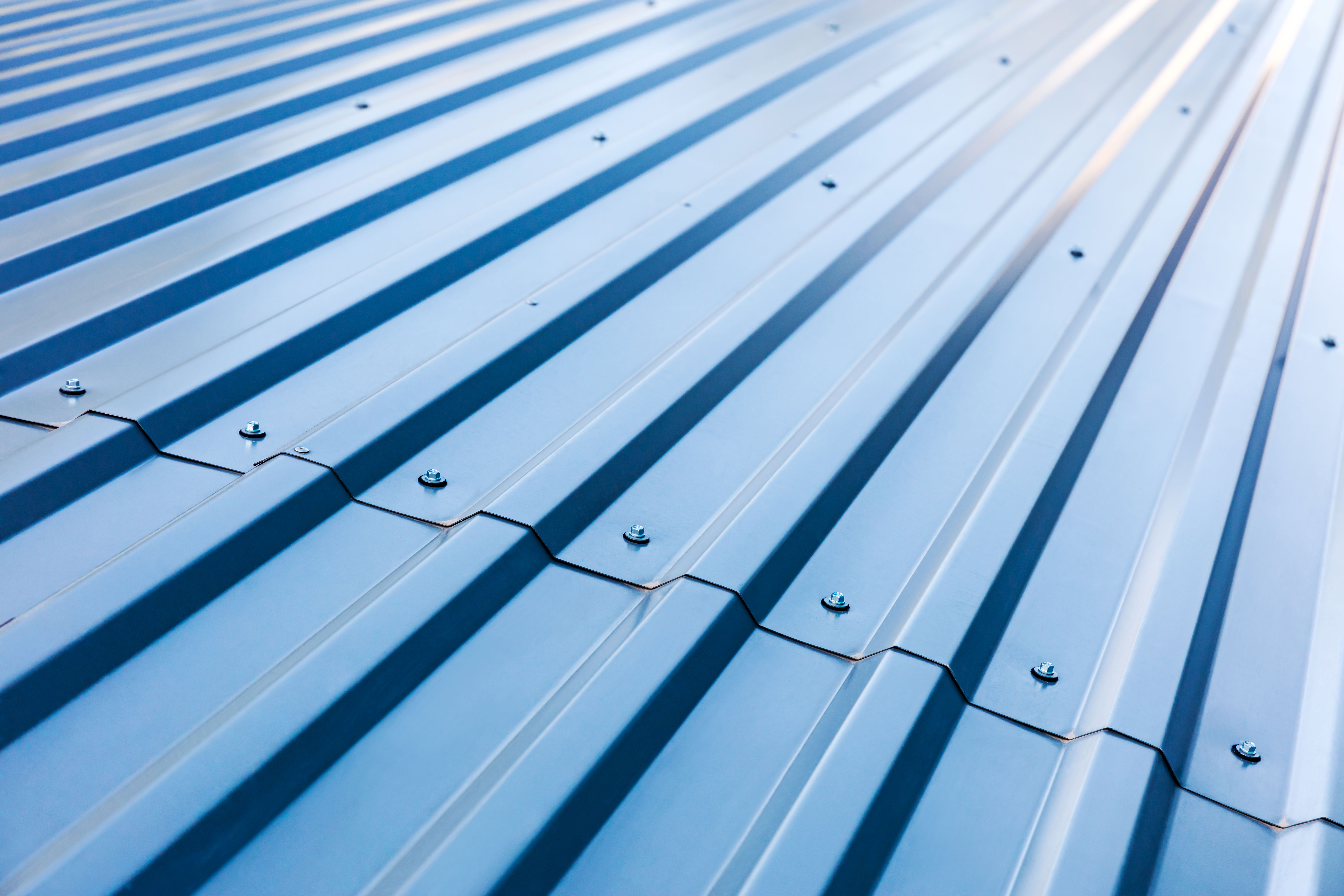
How do I paint a concrete floor?
Painting a concrete floor can enhance its appearance, protect it from wear and tear, and make it easier to clean. Here’s a detailed guide to help you paint your concrete floor successfully.
Step-by-Step Guide
1. Preparation
Materials Needed:
- Concrete cleaner or degreaser
- Water
- Scrub brush or floor scrubber
- Concrete patch or filler
- Sandpaper (medium to fine grit)
- Vacuum or broom
- Painter’s tape
- Primer (concrete or masonry primer)
- Paint (epoxy paint is recommended for concrete floors)
- Paint rollers, brushes, or sprayer
- Safety gear (gloves, goggles, mask)
Steps:
- Clean the Floor: Start by thoroughly cleaning the concrete floor. Remove all dirt, grease, oil stains, and any other contaminants. Use a concrete cleaner or degreaser, scrub the floor with a scrub brush or floor scrubber, and rinse with water. Allow the floor to dry completely.
- Repair Cracks and Holes: Inspect the floor for any cracks or holes. Use a concrete patch or filler to repair these imperfections. Follow the manufacturer’s instructions and allow the repairs to cure fully.
- Smooth the Surface: Sand any rough areas or patches to ensure a smooth surface. Vacuum or sweep away all dust and debris.
- Protect Surrounding Areas: Use painter’s tape to mask off any areas you don’t want to be painted, such as walls or trim.
2. Priming
Choose the Right Primer:
- Use a primer specifically designed for concrete or masonry surfaces. A good primer will help the paint adhere better and last longer.
Application:
- Apply the primer using a roller, brush, or sprayer. Make sure to cover the entire floor evenly. Allow the primer to dry completely according to the manufacturer’s instructions before proceeding to paint.
3. Painting
Choose the Right Paint:
- Epoxy paint is highly recommended for concrete floors because of its durability and resistance to chemicals, stains, and abrasions. It’s especially suitable for high-traffic areas.
Application:
- First Coat: Apply the first coat of epoxy paint with a roller or sprayer, starting from the farthest corner of the room and working your way towards the exit. Use a brush for edges and corners. Ensure even coverage and avoid pooling.
- Second Coat: After the first coat has dried completely, apply a second coat for enhanced durability and coverage. Follow the manufacturer’s instructions for drying times between coats.
4. Finishing Touches
- Inspect and Touch Up: Once the second coat is dry, inspect the floor for any missed spots or uneven areas. Touch up as needed.
- Remove Painter’s Tape: Carefully remove the painter’s tape while the paint is still slightly tacky to avoid peeling off any paint with it.
Maintenance Tips
- Regular Cleaning: Sweep and mop the painted floor regularly to keep it clean and looking new. Use mild cleaning solutions to avoid damaging the paint.
- Protective Measures: Use floor mats or rugs in high-traffic areas to minimize wear. Avoid dragging heavy furniture or objects across the painted floor to prevent scratches.
Considerations for Using Epoxy Paint
Epoxy Paint:
- Pros: Extremely durable, resistant to chemicals and stains, easy to clean, and ideal for high-traffic areas.
- Cons: Requires thorough preparation, has a strong odor during application, and longer curing times.
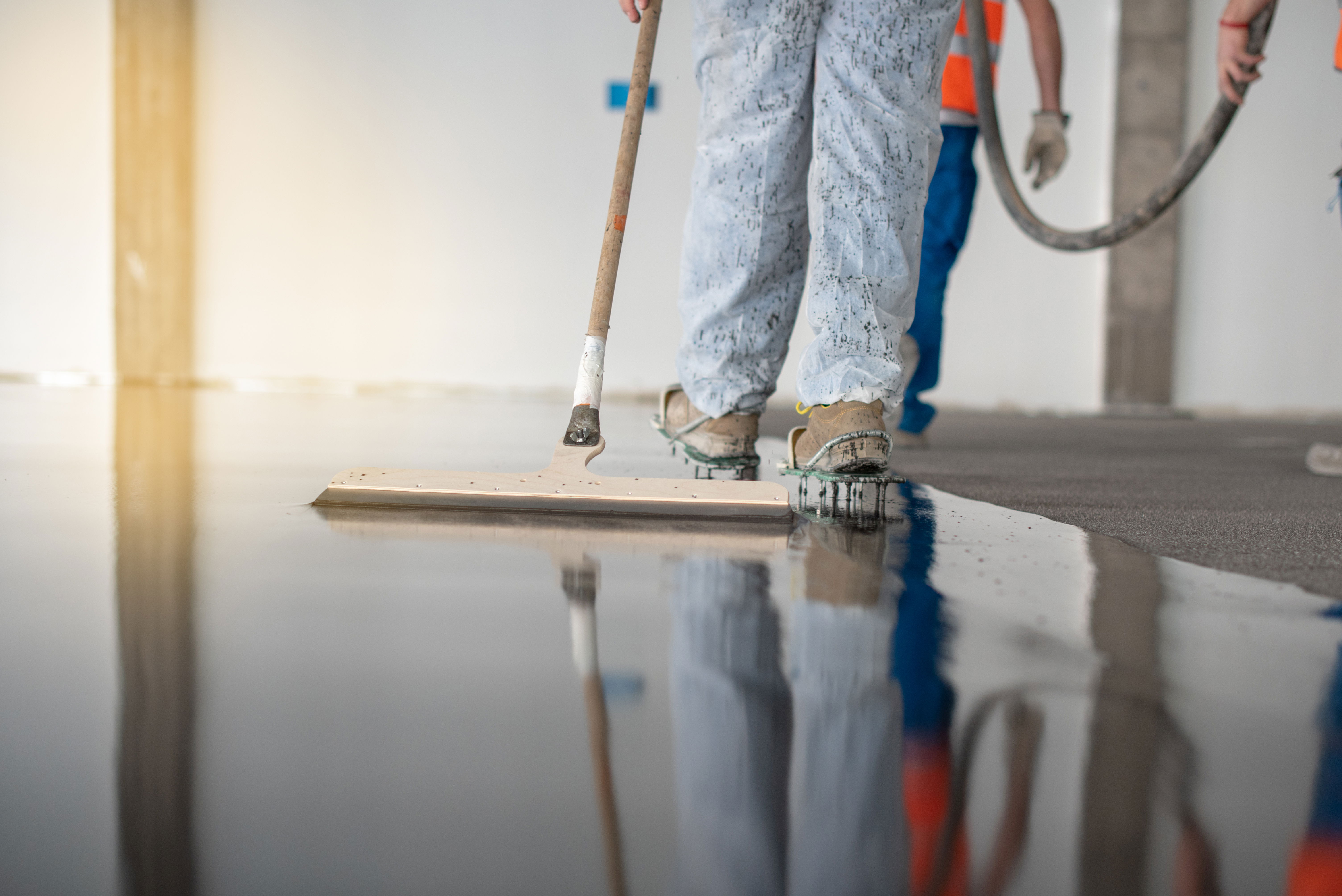
How do I paint a mural?
Painting a mural can transform any space with a vibrant, personalized touch. Whether it’s for a home, school, business, or public area, creating a mural is a rewarding project that requires planning, preparation, and creativity. Here’s a comprehensive guide to help you paint a mural successfully.
Step-by-Step Guide
1. Planning and Design
Materials Needed:
- Sketchbook or drawing software
- Pencil or digital stylus
- Ruler and measuring tape
- Projector (optional)
Steps:
- Conceptualize: Start by brainstorming ideas for your mural. Consider the purpose, theme, and location. Sketch out different designs until you find one that fits your vision.
- Measure the Wall: Take precise measurements of the wall where the mural will be painted. This helps in scaling your design to fit the space.
- Create a Detailed Plan: Draw a detailed plan of your mural, including colors, patterns, and elements. Use grid lines to help with proportions if needed.
2. Gathering Materials
Painting Materials:
- Acrylic paints (recommended for their durability and vibrant colors)
- Brushes (various sizes)
- Rollers
- Painter’s tape
- Drop cloths
- Palettes
- Water containers
- Rags or paper towels
Preparation Materials:
- Primer
- Sandpaper
- Spackle or filler (for wall imperfections)
- Level
- Pencil or chalk (for sketching on the wall)
- Projector (optional for transferring designs)
3. Preparing the Wall
Steps:
- Clean the Wall: Clean the wall to remove any dirt, grease, or dust. Use a mild detergent and water if necessary. Allow the wall to dry completely.
- Repair Imperfections: Fill in any holes, cracks, or dents with spackle or filler. Sand the surface smooth once the filler is dry.
- Prime the Wall: Apply a coat of primer to the entire wall. This ensures better paint adhesion and a more vibrant finish. Allow the primer to dry completely.
4. Transferring the Design
Methods:
- Grid Method: Draw a grid over your design sketch and a corresponding grid on the wall. This helps in accurately transferring the design.
- Projector Method: Use a projector to project your design onto the wall. Trace the design lightly with a pencil or chalk.
- Freehand: If you’re confident in your drawing skills, you can sketch the design directly onto the wall freehand.
5. Painting the Mural
Steps:
- Base Colors: Start with the background and large areas of color. Use rollers for large sections and brushes for more detailed areas. Allow each layer to dry before adding another.
- Details and Layers: Add details and additional layers of color. Work from the background to the foreground, adding highlights, shadows, and intricate details.
- Blending and Shading: Use techniques like blending, stippling, and dry brushing to add depth and texture to your mural.
- Final Touches: Once the mural is complete, step back and review your work. Make any necessary touch-ups to ensure a polished finish.
6. Sealing the Mural
Steps:
- Apply a Sealant: Once the mural is fully dry, apply a clear acrylic sealant to protect it from dirt, moisture, and fading. Use a brush or roller to apply an even coat.
- Drying Time: Allow the sealant to dry completely according to the manufacturer’s instructions.
Tips for a Successful Mural
- Color Selection: Choose colors that complement each other and the space where the mural will be located. Test colors on a small area before committing.
- Brush Care: Keep brushes clean and well-maintained to ensure smooth application and precise details.
- Take Breaks: Step back periodically to view the mural from a distance. This helps you see the overall composition and make adjustments as needed.
- Stay Organized: Keep your workspace organized and materials within reach. Label your paints and clean your brushes regularly.

How do I paint a room with stencils?
Painting a room with stencils can add unique patterns, textures, and designs to your walls, making your space stand out. It’s a relatively easy and cost-effective way to personalize your home. Follow this step-by-step guide to achieve professional-looking results.
Materials Needed
- Stencils (pre-made or custom)
- Painter’s tape or stencil adhesive spray
- Base coat paint
- Stencil paint (acrylic or latex)
- Paint brushes or stencil brushes
- Paint rollers
- Paint tray
- Level and measuring tape
- Drop cloths
- Rags or paper towels
Step-by-Step Guide
1. Preparation
Clean and Prep the Walls:
- Clean: Ensure the walls are clean and free of dust, dirt, and grease. Use a mild detergent (Simple Green) and water if necessary.
- Repair: Patch any holes or cracks with spackle and sand smooth once dry.
Protect Surfaces:
- Cover: Lay down drop cloths to protect floors and furniture.
- Tape: Use painter’s tape to mask off any trim, baseboards, or other areas you don’t want to paint.
Base Coat:
- Prime: If the wall is a dark color or has stains, apply a primer.
- Paint: Apply your base coat color and allow it to dry completely. This is the background color that will show through the stencil.
2. Choosing and Positioning Stencils
Stencil Selection:
- Design: Choose a stencil design that complements your room’s decor. Pre-made stencils are available, or you can create custom designs.
- Size: Consider the size of the stencil relative to the wall space.
Positioning:
- Measure: Use a level and measuring tape to ensure the stencil is straight and evenly spaced.
- Mark: Lightly mark the wall with a pencil where the stencil will go.
- Secure: Use painter’s tape or stencil adhesive spray to secure the stencil to the wall. Make sure it is flat against the surface to avoid paint bleeding underneath.
3. Painting the Stencil
Paint Application:
- Minimal Paint: Dip your stencil brush or sponge into the paint, then dab off excess paint onto a paper towel. Too much paint can cause bleeding under the stencil.
- Dabbing Technique: Use a dabbing or stippling motion to apply the paint. Avoid brushing back and forth.
- Multiple Layers: If a darker or more saturated color is desired, apply multiple light layers rather than one thick layer.
Repositioning:
- Align: Carefully remove the stencil and reposition it according to your design. Ensure the stencil is lined up with the previous pattern to maintain consistency.
- Clean: Wipe off any paint build-up on the stencil before reapplying it to the wall.
4. Finishing Touches
Final Details:
- Touch-Ups: Use a small brush to touch up any areas where the paint may have bled or where the pattern is incomplete.
- Edge Cleaning: If necessary, use a fine-tipped brush to clean up the edges of the stencil design.
Sealing (Optional):
- Seal: If desired, apply a clear sealer to protect the stencil design, especially in high-traffic areas or places prone to moisture.
Tips for Success
- Test First: Try your stencil design on a piece of cardboard or a hidden wall area to practice the technique and check color combinations.
- Light Coats: Always use light coats of paint on the stencil to prevent bleeding and achieve a crisp design.
- Dry Time: Allow the paint to dry completely between layers and before repositioning the stencil.
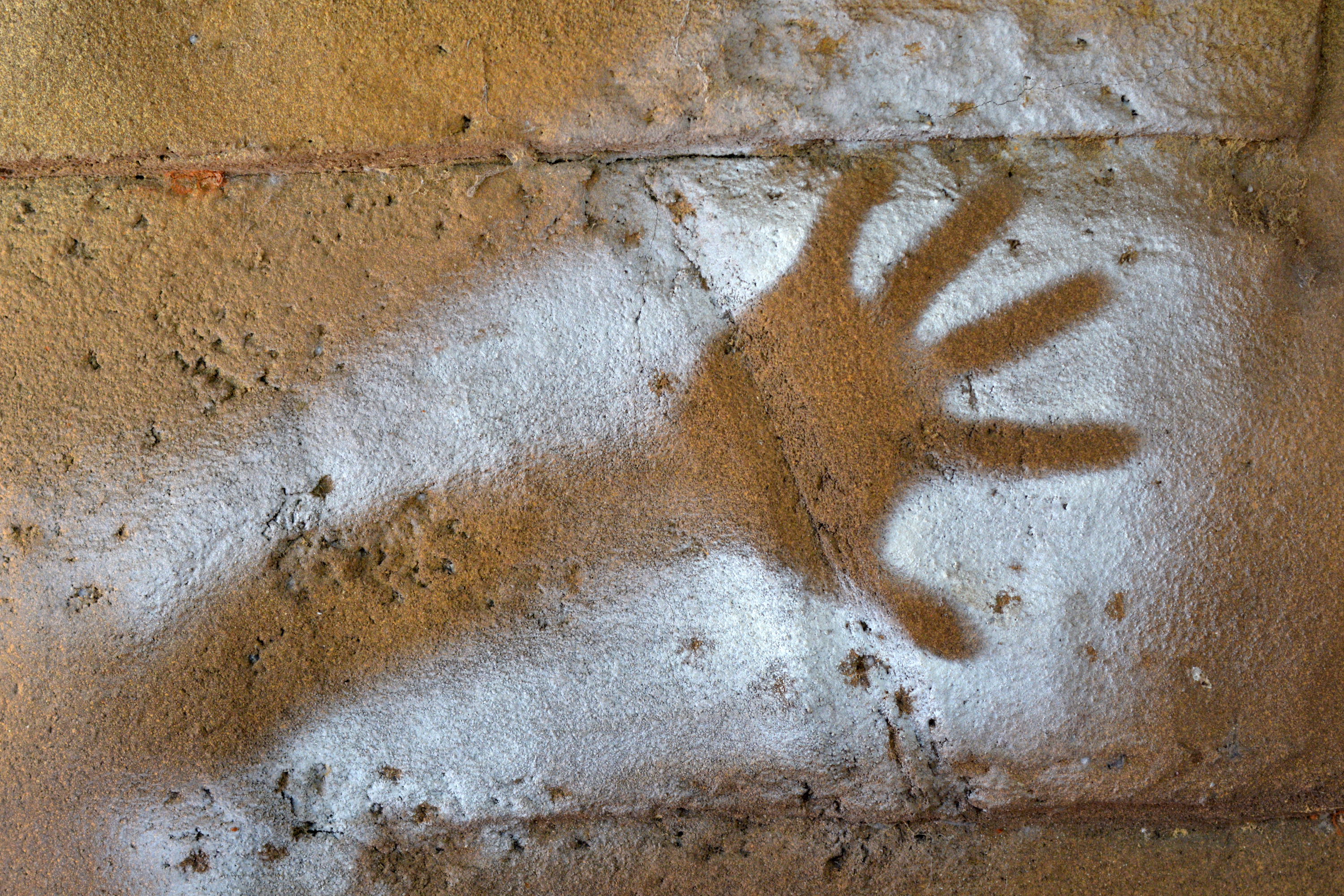
How do I paint a room with stripes?
Painting stripes on a wall can add a stylish and sophisticated touch to any room. Whether you opt for bold, wide stripes or subtle, narrow ones, this technique can significantly enhance your space. Follow these steps to achieve perfect stripes on your walls.
Materials Needed
- Paint in two or more colors
- Painter’s tape
- Paint brushes or rollers
- Paint tray
- Measuring tape
- Level
- Pencil
- Drop cloths
- Step ladder (if needed)
- Rags or paper towels
Step-by-Step Guide
1. Preparation
Clean and Prep the Walls:
- Clean: Ensure the walls are clean and free of dust, dirt, and grease. Use a mild detergent and water if necessary.
- Repair: Patch any holes or cracks with spackle and sand smooth once dry.
Protect Surfaces:
- Cover: Lay down drop cloths to protect floors and furniture.
- Tape: Use painter’s tape to mask off any trim, baseboards, or other areas you don’t want to paint.
Base Coat:
- Prime: If the wall is a dark color or has stains, apply a primer.
- Paint: Apply your base coat color (this will be one of your stripe colors) and allow it to dry completely.
2. Planning Your Stripes
Measure and Mark:
- Measure Wall: Measure the height and width of the wall to determine the number of stripes and their width.
- Calculate Stripes: Decide on the width of your stripes and mark them lightly with a pencil. Ensure the stripes are evenly spaced.
Mark the Stripes:
- Level Lines: Use a level to draw straight, horizontal or vertical lines where the stripes will go. Make sure the lines are light enough to be covered by paint.
3. Taping the Stripes
Apply Painter’s Tape:
- Straight Edges: Apply painter’s tape along the outside of your pencil lines. Place the tape on the edge of the line that will not be painted to ensure crisp edges.
- Press Down: Press down firmly on the edges of the tape to prevent paint from bleeding underneath.
4. Painting the Stripes
Start Painting:
- Alternate Colors: Begin by painting the stripes in the alternating color. Use a brush or roller to apply the paint evenly.
- Multiple Coats: If needed, apply a second coat once the first coat is dry for better coverage.
Remove Tape:
- Careful Removal: Carefully remove the painter’s tape while the paint is still slightly wet to avoid peeling off the paint. Pull the tape at a 45-degree angle for the best results.
5. Finishing Touches
Touch-Up:
- Clean Edges: Use a small brush to touch up any areas where the paint may have bled under the tape or where the lines are not perfect.
- Final Inspection: Look over the entire wall and fix any imperfections.
Tips for Success
- Test Colors: Try your chosen paint colors on a small section of the wall to ensure they look good together and in the room’s lighting.
- Precision: Measure carefully and use a level to ensure your stripes are straight and evenly spaced.
- Quality Tape: Use high-quality painter’s tape to avoid paint bleed and achieve sharp lines.
- Dry Time: Allow the paint to dry completely between coats and before removing the tape.

How do I paint a room with a faux finish?
A faux finish can add depth, texture, and a unique aesthetic to any room, transforming plain walls into eye-catching features. This technique mimics the look of various materials such as marble, wood, or even fabric. Here’s a step-by-step guide on how to paint a room with a faux finish.
Materials Needed
- Primer
- Base coat paint (desired color)
- Top coat paint or glaze (depending on the faux finish technique)
- Paintbrushes and rollers
- Painter's tape
- Drop cloths
- Protective gear (gloves, mask)
- Tools for specific faux finishes (sponges, rags, combs, etc.)
Step-by-Step Guide
1. Prepare the Room
- Protect and Clear the Area: Move furniture out of the room or cover it with drop cloths. Cover the floor with drop cloths to protect it from paint spills.
- Clean the Walls: Ensure the walls are clean, dry, and free of dust and grease.
2. Prime the Walls
- Apply Primer: Use a roller to apply a coat of primer to the walls. This helps the paint adhere better and ensures a uniform finish.
- Let it Dry: Allow the primer to dry completely before moving to the next step.
3. Apply the Base Coat
- Paint the Base Color: Choose a base color that will serve as the foundation for your faux finish. Apply the base coat evenly using a roller.
- Allow to Dry: Let the base coat dry thoroughly. This may take several hours or overnight, depending on the paint and humidity.
4. Choose Your Faux Finish Technique
- Sponging: For a textured, mottled look, use a sponge to dab the top coat onto the base coat.
- Rag Rolling: For a soft, fabric-like texture, roll a rag coated in glaze or paint over the base coat.
- Marbling: For a marble effect, use a feather or small brush to create veins on the wall.
- Wood Graining: For a wood grain appearance, use a wood graining tool or comb to create lines and knots.
5. Apply the Faux Finish
- Sponging Technique:
- Dip a damp sponge into the top coat paint or glaze.
- Dab the sponge onto the wall in a random pattern, rotating the sponge to vary the texture.
- Blend the edges to avoid harsh lines.
- Rag Rolling Technique:
- Dip a rag into the glaze or top coat paint.
- Roll or crumple the rag and roll it over the wall, creating a textured pattern.
- Work in small sections to ensure even application.
- Marbling Technique:
- Use a small brush or feather to apply thin, irregular lines (veins) on the wall.
- Blend the veins slightly with a soft brush for a natural look.
- Wood Graining Technique:
- Apply a thin layer of glaze over the base coat.
- Use the wood graining tool to create wood-like patterns, dragging it through the glaze.
- Wipe the tool clean between strokes to avoid smudging.
6. Blend and Finish
- Blending: Use a dry brush or soft cloth to blend and soften the edges of the faux finish, ensuring a seamless look.
- Layering: Add additional layers if needed to achieve the desired depth and texture.
7. Final Touches
- Inspect and Touch Up: Inspect the walls and touch up any areas that need more detail or blending.
- Clean Up: Remove painter's tape, clean brushes and rollers, and dispose of drop cloths carefully.
Tips for Success
- Practice First: Test your technique on a small, inconspicuous area or a piece of cardboard before applying it to the entire room.
- Work in Sections: Faux finishing can be time-consuming. Work in manageable sections to ensure consistency.
- Blend Well: Blending is key to a natural-looking faux finish. Take your time to blend the edges and layers properly.
How do I paint a room with a distressed look?
Achieving a distressed look in a room can add character and a vintage charm to your space. This painting technique is perfect for those who love a rustic, shabby chic, or antique aesthetic. Here’s a step-by-step guide on how to paint a room with a distressed look.
Materials Needed
- Primer
- Base coat paint (desired color)
- Top coat paint (contrasting or complementing color)
- Sandpaper (various grits)
- Paintbrushes and rollers
- Painter's tape
- Drop cloths
- Protective gear (gloves, mask)
Step-by-Step Guide
1. Prepare the Room
- Protect and Clear the Area: Move furniture out of the room or cover it with drop cloths. Cover the floor with drop cloths to protect it from paint spills.
- Clean the Walls: Ensure the walls are clean, dry, and free of dust and grease.
2. Prime the Walls
- Apply Primer: Use a roller to apply a coat of primer to the walls. This helps the paint adhere better and ensures a uniform finish.
- Let it Dry: Allow the primer to dry completely before moving to the next step.
3. Apply the Base Coat
- Paint the Base Color: Choose a base color that will show through the top coat. This is usually a lighter color. Apply the base coat evenly using a roller.
- Allow to Dry: Let the base coat dry thoroughly. This may take several hours or overnight, depending on the paint and humidity.
4. Apply the Top Coat
- Paint the Top Color: Once the base coat is dry, apply the top coat. This color should contrast or complement the base color. Use a roller or brush for even coverage.
- Dry Completely: Ensure the top coat is completely dry before proceeding to the distressing step.
5. Distress the Walls
- Sand the Surface: Use sandpaper to gently sand areas of the wall where you want the base color to show through. Focus on edges, corners, and spots that would naturally wear over time.
- Vary the Pressure: Use different grits of sandpaper and vary the pressure to create a more natural, varied distressed look.
- Wipe Away Dust: Use a damp cloth to wipe away dust and debris from sanding.
6. Optional: Add Additional Effects
- Crackle Medium: Apply a crackle medium between the base and top coat for a crackled finish.
- Glazing: Use a glaze to add depth and dimension to the distressed areas.
7. Final Touches
- Inspect and Touch Up: Inspect the walls and touch up any areas that need more distressing or additional paint.
- Clean Up: Remove painter's tape, clean brushes and rollers, and dispose of drop cloths carefully.
Tips for Success
- Test First: Always test your technique on a small, inconspicuous area before applying it to the entire room.
- Be Patient: Allow ample drying time between each step to avoid smudging and ensure the best results.
- Layering: Consider multiple layers of distressing for a more intricate and authentic look.
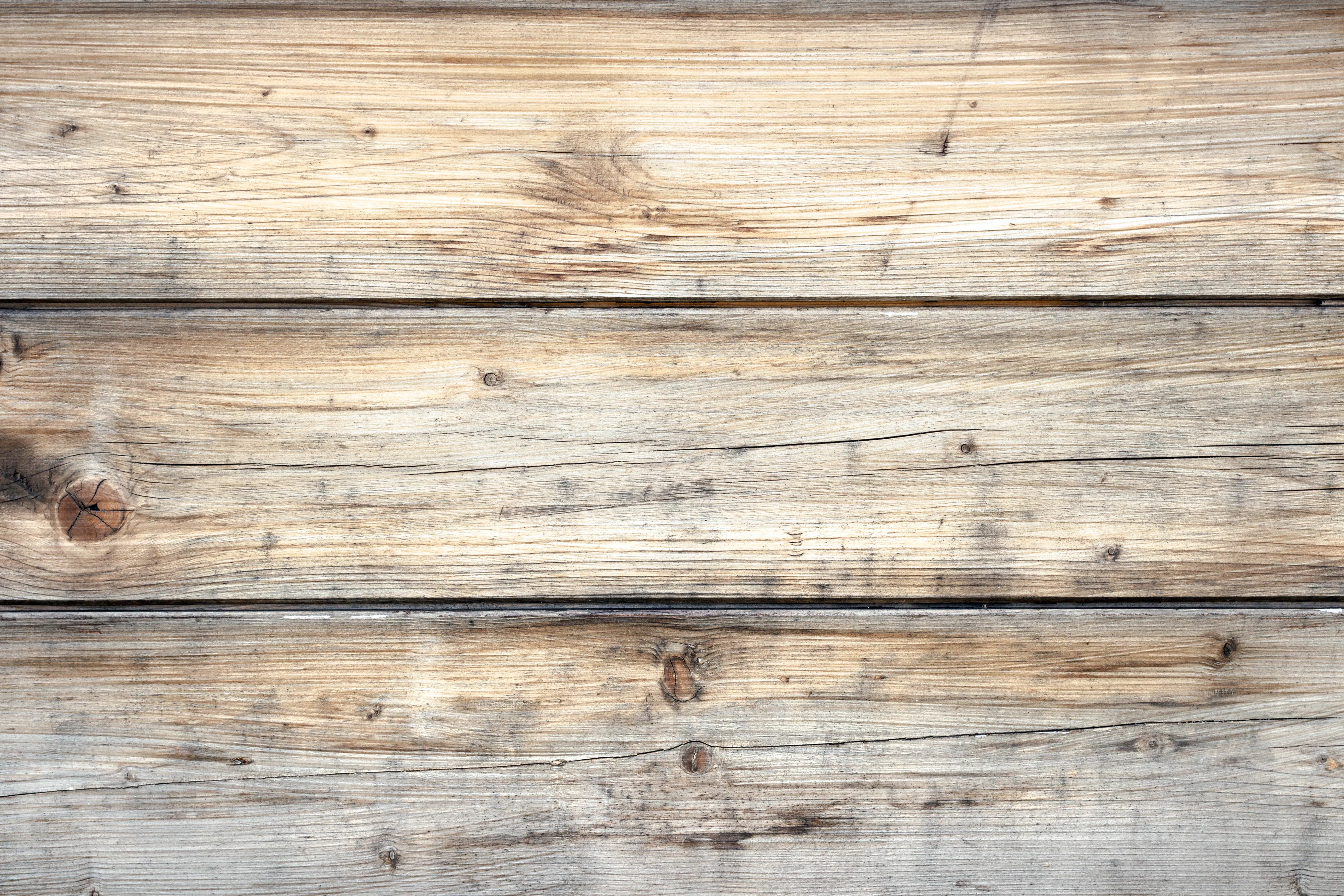
How do I paint a room with a chalkboard paint?
Chalkboard paint can turn any wall into a fun and functional space for writing, drawing, and organizing. It’s a great addition to kitchens, playrooms, offices, or any area where you want to add a creative touch. Here’s a step-by-step guide to painting a room with chalkboard paint.
Materials Needed
- Chalkboard paint
- Primer (if needed)
- Painter's tape
- Paintbrushes and rollers
- Drop cloths
- Sandpaper (fine grit)
- Paint tray
- Chalk for seasoning
Step-by-Step Guide
1. Prepare the Room
- Protect and Clear the Area: Move furniture away from the wall you plan to paint or cover it with drop cloths. Lay drop cloths on the floor to protect it from paint spills.
- Clean the Walls: Clean the walls to remove dust, dirt, and grease. Ensure the surface is dry before painting.
2. Prime the Walls
- Determine if Primer is Needed: If you are painting over a dark color or a surface that has not been painted before, it’s a good idea to apply a primer. This helps the chalkboard paint adhere better and ensures a more uniform finish.
- Apply Primer: Use a roller to apply a coat of primer to the walls. Allow it to dry completely.
3. Prepare the Surface
- Sand the Walls: Lightly sand the walls with fine-grit sandpaper to create a smooth surface. This step is especially important if the walls are rough or glossy.
- Wipe Clean: After sanding, wipe the walls with a damp cloth to remove any dust.
4. Tape the Edges
- Use Painter’s Tape: Apply painter’s tape around the edges of the wall, baseboards, and any other areas you want to protect from the paint.
5. Apply the Chalkboard Paint
- Stir the Paint: Thoroughly stir the chalkboard paint before application to ensure it’s well mixed.
- First Coat: Use a roller to apply the first coat of chalkboard paint. Work in small sections and use smooth, even strokes.
- Let it Dry: Allow the first coat to dry completely, following the manufacturer’s recommended drying time (typically 2-4 hours).
- Second Coat: Apply a second coat of chalkboard paint. This coat will ensure better coverage and durability.
- Additional Coats (if needed): If the surface still isn’t fully covered, you may need to apply a third coat. Allow each coat to dry fully before applying the next.
6. Remove Painter’s Tape
- Carefully Remove Tape: Once the final coat is dry, carefully remove the painter’s tape to reveal clean edges.
7. Cure the Chalkboard Paint
- Wait for Full Cure: Allow the chalkboard paint to cure for at least 3 days before using it. This curing time is crucial for the paint to harden properly.
- Season the Chalkboard: To season the chalkboard, rub the side of a piece of chalk over the entire surface. This will create a layer of chalk dust that will make writing and erasing easier.
- Wipe Clean: After seasoning, wipe the surface clean with a dry cloth.
Tips for Success
- Smooth Application: For a smoother finish, consider using a high-density foam roller instead of a standard roller.
- Proper Ventilation: Ensure the room is well-ventilated during painting and drying to help with odor and drying time.
- Test Area: If you’re unsure about the color or finish, test the chalkboard paint on a small, inconspicuous area first.
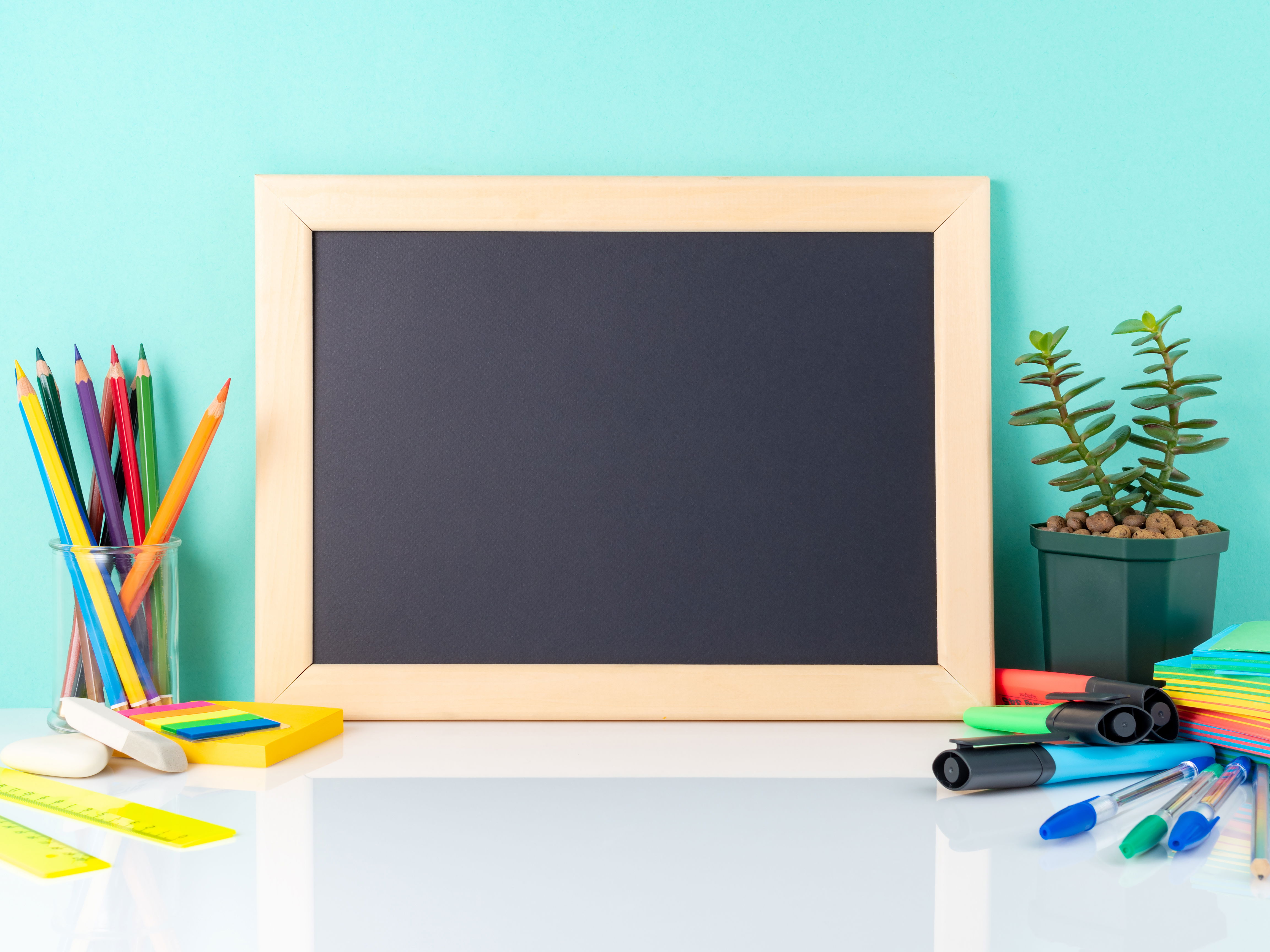
How do I paint a room with a magnetic paint?
Painting a room with magnetic paint is a fantastic way to create an interactive and functional space. It’s perfect for playrooms, kitchens, offices, and classrooms, allowing you to attach magnets directly to the wall. Here’s a step-by-step guide to successfully applying magnetic paint in your room.
Materials Needed
- Magnetic paint (also known as magnetic primer)
- Topcoat paint (color of your choice)
- Primer (if needed)
- Painter's tape
- Paintbrushes and rollers
- Drop cloths
- Sandpaper (fine grit)
- Paint tray
- Stir sticks
- Magnets
Step-by-Step Guide
1. Prepare the Room
- Protect and Clear the Area: Move furniture away from the wall you plan to paint or cover it with drop cloths. Lay drop cloths on the floor to protect it from paint spills.
- Clean the Walls: Clean the walls to remove dust, dirt, and grease. Ensure the surface is dry before painting.
2. Prime the Walls
- Determine if Primer is Needed: If you are painting over a dark color or a surface that has not been painted before, it’s a good idea to apply a primer. This helps the magnetic paint adhere better and ensures a more uniform finish.
- Apply Primer: Use a roller to apply a coat of primer to the walls. Allow it to dry completely.
3. Prepare the Surface
- Sand the Walls: Lightly sand the walls with fine-grit sandpaper to create a smooth surface. This step is especially important if the walls are rough or glossy.
- Wipe Clean: After sanding, wipe the walls with a damp cloth to remove any dust.
4. Tape the Edges
- Use Painter’s Tape: Apply painter’s tape around the edges of the wall, baseboards, and any other areas you want to protect from the paint.
5. Apply the Magnetic Paint
- Stir the Paint: Magnetic paint contains metal particles, so it needs to be stirred thoroughly before and during application to ensure an even distribution of particles.
- First Coat: Use a roller to apply the first coat of magnetic paint. Work in small sections and use smooth, even strokes.
- Let it Dry: Allow the first coat to dry completely, following the manufacturer’s recommended drying time (typically 30-60 minutes).
- Additional Coats: Apply at least three coats of magnetic paint to ensure strong magnetic adhesion. More coats may be necessary for stronger magnetic hold. Allow each coat to dry fully before applying the next.
6. Remove Painter’s Tape
- Carefully Remove Tape: Once the final coat of magnetic paint is dry, carefully remove the painter’s tape to reveal clean edges.
7. Apply the Topcoat Paint
- Stir the Paint: Stir your topcoat paint thoroughly.
- Apply Topcoat: Use a roller to apply the topcoat paint over the magnetic paint. You can use any color you desire. Apply two coats if necessary, allowing each coat to dry completely.
- Dry and Cure: Allow the topcoat to dry and cure according to the paint manufacturer’s instructions.
Tips for Success
- Smooth Application: For a smoother finish, consider using a high-density foam roller instead of a standard roller.
- Proper Ventilation: Ensure the room is well-ventilated during painting and drying to help with odor and drying time.
- Strong Magnets: Use strong, rare-earth magnets for the best results, as magnetic paint does not hold lightweight or weak magnets well.
- Test Area: If you’re unsure about the color or finish, test the magnetic paint on a small, inconspicuous area first.
How do I paint a room with a glitter paint?
Adding glitter paint to a room can create a stunning and whimsical effect that enhances the space with sparkle and shine. It’s a perfect choice for accent walls, kids’ rooms, or any space where you want to add a touch of glamour. Here’s a step-by-step guide to successfully applying glitter paint to a room.
Materials Needed
- Glitter paint or glitter paint additive
- Base paint (color of your choice)
- Primer (if needed)
- Painter's tape
- Paintbrushes and rollers
- Drop cloths
- Sandpaper (fine grit)
- Paint tray
- Stir sticks
Step-by-Step Guide
1. Prepare the Room
- Protect and Clear the Area: Move furniture away from the wall you plan to paint or cover it with drop cloths. Lay drop cloths on the floor to protect it from paint spills.
- Clean the Walls: Clean the walls to remove dust, dirt, and grease. Ensure the surface is dry before painting.
2. Prime the Walls
- Determine if Primer is Needed: If you are painting over a dark color or a surface that has not been painted before, it’s a good idea to apply a primer. This helps the base paint adhere better and ensures a more uniform finish.
- Apply Primer: Use a roller to apply a coat of primer to the walls. Allow it to dry completely.
3. Prepare the Surface
- Sand the Walls: Lightly sand the walls with fine-grit sandpaper to create a smooth surface. This step is especially important if the walls are rough or glossy.
- Wipe Clean: After sanding, wipe the walls with a damp cloth to remove any dust.
4. Tape the Edges
- Use Painter’s Tape: Apply painter’s tape around the edges of the wall, baseboards, and any other areas you want to protect from the paint.
5. Apply the Base Paint
- Stir the Paint: Stir your base paint thoroughly.
- First Coat: Use a roller to apply the first coat of base paint. Work in small sections and use smooth, even strokes.
- Let it Dry: Allow the first coat to dry completely, following the manufacturer’s recommended drying time (typically 2-4 hours).
- Additional Coats: Apply a second coat of base paint if necessary for full coverage. Allow it to dry fully before moving on to the next step.
6. Prepare the Glitter Paint
- Mix Glitter Additive: If you are using a glitter additive, mix it into the base paint according to the manufacturer’s instructions. Stir thoroughly to ensure even distribution of glitter.
- Pre-Mixed Glitter Paint: If you are using pre-mixed glitter paint, stir it thoroughly to ensure the glitter is evenly distributed.
7. Apply the Glitter Paint
- First Coat: Use a roller or brush to apply the first coat of glitter paint. Apply in smooth, even strokes.
- Let it Dry: Allow the first coat to dry completely.
- Additional Coats: Apply additional coats of glitter paint as needed to achieve the desired level of sparkle. Allow each coat to dry fully before applying the next.
8. Remove Painter’s Tape
- Carefully Remove Tape: Once the final coat of glitter paint is dry, carefully remove the painter’s tape to reveal clean edges.
Tips for Success
- Consistent Mixing: Stir the paint frequently during application to keep the glitter evenly distributed.
- Avoid Overloading: Apply thin coats to avoid overloading the roller or brush with glitter, which can result in uneven texture.
- Test Area: Test the glitter paint on a small, inconspicuous area first to see how the glitter looks when dry.
- Lighting: Consider the lighting in the room, as it will enhance the sparkle effect of the glitter paint.
How do I paint a room with a metallic paint?
Metallic paint can add a luxurious and modern touch to any room, creating a sleek and sophisticated atmosphere. It’s perfect for accent walls, entire rooms, or specific design elements. Here’s a step-by-step guide to successfully applying metallic paint to a room.
Materials Needed
- Metallic paint
- Primer (preferably tinted to match the base color of the metallic paint)
- Paintbrushes and rollers (use high-quality, preferably with a foam roller for a smooth finish)
- Painter's tape
- Drop cloths
- Sandpaper (fine grit)
- Paint tray
- Stir sticks
Step-by-Step Guide
1. Prepare the Room
- Protect and Clear the Area: Move furniture away from the wall you plan to paint or cover it with drop cloths. Lay drop cloths on the floor to protect it from paint spills.
- Clean the Walls: Clean the walls to remove dust, dirt, and grease. Ensure the surface is dry before painting.
2. Prime the Walls
- Choose the Right Primer: Use a high-quality primer, preferably tinted to match the base color of the metallic paint. This helps to enhance the metallic effect and ensures better coverage.
- Apply Primer: Use a roller to apply a coat of primer to the walls. Allow it to dry completely.
3. Prepare the Surface
- Sand the Walls: Lightly sand the walls with fine-grit sandpaper to create a smooth surface. This step is especially important if the walls are rough or glossy.
- Wipe Clean: After sanding, wipe the walls with a damp cloth to remove any dust.
4. Tape the Edges
- Use Painter’s Tape: Apply painter’s tape around the edges of the wall, baseboards, and any other areas you want to protect from the paint.
5. Apply the Base Paint
- Stir the Paint: Stir your base paint thoroughly.
- First Coat: Use a roller to apply the first coat of base paint. Work in small sections and use smooth, even strokes.
- Let it Dry: Allow the first coat to dry completely, following the manufacturer’s recommended drying time (typically 2-4 hours).
- Additional Coats: Apply a second coat of base paint if necessary for full coverage. Allow it to dry fully before moving on to the next step.
6. Apply the Metallic Paint
- Stir the Paint: Stir the metallic paint thoroughly to ensure the metallic particles are evenly distributed.
- First Coat: Use a high-quality roller or a foam roller to apply the first coat of metallic paint. Apply in smooth, even strokes.
- Let it Dry: Allow the first coat to dry completely.
- Additional Coats: Apply additional coats of metallic paint as needed to achieve the desired look. Metallic paint often requires two or more coats for full coverage and to enhance the metallic effect. Allow each coat to dry fully before applying the next.
7. Remove Painter’s Tape
- Carefully Remove Tape: Once the final coat of metallic paint is dry, carefully remove the painter’s tape to reveal clean edges.
Tips for Success
- Consistent Mixing: Stir the paint frequently during application to keep the metallic particles evenly distributed.
- Avoid Overloading: Apply thin coats to avoid overloading the roller or brush, which can result in an uneven finish.
- Test Area: Test the metallic paint on a small, inconspicuous area first to see how it looks when dry.
- Lighting: Consider the lighting in the room, as it will enhance the metallic effect of the paint.
- Cross-Hatching Technique: For a more textured look, use a cross-hatching technique by applying the paint in a crisscross pattern.
How do I paint a room with a glow-in-the-dark paint?
Adding glow-in-the-dark paint to a room can create a magical and whimsical atmosphere, especially in kids' rooms or themed spaces. This type of paint absorbs light during the day and emits a soft glow in the dark, adding a unique touch to your decor. Here’s a step-by-step guide on how to apply glow-in-the-dark paint effectively.
Materials Needed
- Glow-in-the-dark paint
- Primer (if needed)
- Base coat paint (optional, usually white or light color for best glow effect)
- Paintbrushes and rollers
- Painter's tape
- Drop cloths
- Sandpaper (fine grit)
- Paint tray
- Stir sticks
- UV or blacklight (optional, to enhance the glowing effect)
Step-by-Step Guide
1. Prepare the Room
- Protect and Clear the Area: Move furniture away from the wall you plan to paint or cover it with drop cloths. Lay drop cloths on the floor to protect it from paint spills.
- Clean the Walls: Clean the walls to remove dust, dirt, and grease. Ensure the surface is dry before painting.
2. Prime the Walls
- Prime the Surface: If your walls are dark or have an uneven surface, apply a coat of primer. This helps the glow-in-the-dark paint adhere better and enhances the glow effect.
- Allow to Dry: Let the primer dry completely.
3. Apply a Base Coat (Optional)
- Base Coat Selection: For the best glow effect, apply a base coat of white or a light color. This helps the glow-in-the-dark paint to stand out more.
- Apply the Base Coat: Use a roller to apply the base coat evenly across the walls.
- Let it Dry: Allow the base coat to dry completely.
4. Prepare the Surface
- Sand the Walls: Lightly sand the walls with fine-grit sandpaper to create a smooth surface if necessary.
- Wipe Clean: After sanding, wipe the walls with a damp cloth to remove any dust.
5. Tape the Edges
- Use Painter’s Tape: Apply painter’s tape around the edges of the wall, baseboards, and any other areas you want to protect from the paint.
6. Apply the Glow-in-the-Dark Paint
- Stir the Paint: Stir your glow-in-the-dark paint thoroughly to ensure the glowing particles are evenly distributed.
- First Coat: Use a high-quality brush or roller to apply the first coat of glow-in-the-dark paint. Apply in smooth, even strokes.
- Let it Dry: Allow the first coat to dry completely. Glow-in-the-dark paint can take longer to dry than regular paint.
- Additional Coats: Apply additional coats of glow-in-the-dark paint as needed to achieve the desired glow intensity. Two to three coats are usually recommended. Allow each coat to dry fully before applying the next.
7. Remove Painter’s Tape
- Carefully Remove Tape: Once the final coat of glow-in-the-dark paint is dry, carefully remove the painter’s tape to reveal clean edges.
Tips for Success
- Charge the Paint: Glow-in-the-dark paint needs to be charged with light to glow effectively. Use a UV or blacklight to charge the paint for a brighter and longer-lasting glow.
- Consistent Mixing: Stir the paint frequently during application to keep the glowing particles evenly distributed.
- Test Area: Test the glow effect on a small, inconspicuous area first to see how it looks when dry and charged.
- Layering: For detailed designs or patterns, consider using stencils to apply the glow-in-the-dark paint in specific areas.
How do I paint a room with a dry erase paint?
Transforming a wall or an entire room into a dry erase board can be a fantastic addition to a home office, kitchen, or children's playroom. Dry erase paint allows you to write and erase messages, drawings, and notes directly on the wall. Here's a comprehensive guide to help you apply dry erase paint effectively.
Materials Needed
- Dry erase paint kit
- Primer (if necessary)
- Base coat paint (optional)
- Paint rollers and brushes
- Painter's tape
- Drop cloths
- Fine-grit sandpaper
- Paint tray
- Stir sticks
- Cleaning supplies (soap, water, cloth)
Step-by-Step Guide
1. Prepare the Room
- Protect and Clear the Area: Move furniture away from the walls or cover them with drop cloths. Protect the floor with drop cloths to catch any drips.
- Clean the Walls: Clean the walls with soap and water to remove any dust, grease, or dirt. Ensure the surface is completely dry before proceeding.
2. Prime the Walls
- Prime the Surface: If your walls are dark or have an uneven texture, apply a coat of primer. This step is essential for the dry erase paint to adhere properly and perform well.
- Let it Dry: Allow the primer to dry completely.
3. Apply a Base Coat (Optional)
- Base Coat Selection: If desired, apply a base coat of your chosen color. Many people prefer white or a light color to make the dry erase marks more visible.
- Apply the Base Coat: Use a roller to apply the base coat evenly across the walls.
- Let it Dry: Allow the base coat to dry thoroughly.
4. Prepare the Surface
- Sand the Walls: Lightly sand the primed or base-coated walls with fine-grit sandpaper to ensure a smooth surface.
- Wipe Clean: Remove any dust from sanding with a damp cloth.
5. Tape the Edges
- Use Painter’s Tape: Apply painter’s tape around the edges of the wall, baseboards, and any other areas you want to protect from the paint.
6. Mix and Apply the Dry Erase Paint
- Mix the Paint: Follow the manufacturer’s instructions to mix the dry erase paint thoroughly. Some dry erase paints come in two-part systems that need to be mixed before application.
- First Coat: Use a high-quality brush or roller to apply the first coat of dry erase paint. Apply in smooth, even strokes. Dry erase paint is typically clear, so it may look slightly different from regular paint.
- Let it Dry: Allow the first coat to dry completely. Drying times can vary, so refer to the product instructions.
- Additional Coats: Apply a second coat if recommended by the manufacturer, ensuring each coat dries fully before applying the next.
7. Remove Painter’s Tape
- Carefully Remove Tape: Once the final coat is dry, carefully remove the painter’s tape to reveal clean edges.
Tips for Success
- Cure Time: Allow the paint to cure fully before using the dry erase surface. This can take several days, depending on the product.
- Smooth Surface: Ensure the surface is as smooth as possible for the best writing and erasing experience.
- Quality Materials: Use high-quality dry erase markers and cleaning supplies to maintain the surface.
- Ventilation: Make sure the room is well-ventilated during and after painting to help with drying and curing.
How do I paint a room with a crackle finish?
A crackle finish adds an aged, vintage look to your walls, creating a unique texture that resembles cracked paint. This technique is popular for giving a rustic charm to rooms and furniture. Here’s a step-by-step guide on how to achieve a crackle finish in a room.
Materials Needed
- Base coat paint (latex)
- Crackle medium
- Top coat paint (latex, contrasting color to base coat)
- Paint rollers and brushes
- Painter's tape
- Drop cloths
- Sandpaper (fine-grit)
- Paint trays
- Cleaning supplies (soap, water, cloth)
Step-by-Step Guide
1. Prepare the Room
- Protect and Clear the Area: Move furniture away from the walls or cover them with drop cloths. Protect the floor with drop cloths to catch any drips.
- Clean the Walls: Clean the walls with soap and water to remove any dust, grease, or dirt. Ensure the surface is completely dry before proceeding.
2. Apply the Base Coat
- Choose a Base Color: Select a base coat color that will show through the cracks. This should contrast with the top coat color for a noticeable effect.
- Paint the Base Coat: Use a roller or brush to apply the base coat evenly across the walls.
- Let it Dry: Allow the base coat to dry completely, which may take several hours depending on the paint type and room conditions.
3. Prepare the Surface
- Sand the Walls: Lightly sand the base coat with fine-grit sandpaper to ensure a smooth surface.
- Wipe Clean: Remove any dust from sanding with a damp cloth.
4. Tape the Edges
- Use Painter’s Tape: Apply painter’s tape around the edges of the wall, baseboards, and any other areas you want to protect from the paint.
5. Apply the Crackle Medium
- Choose the Crackle Medium: Select a crackle medium appropriate for the size of cracks you desire. Follow the manufacturer’s instructions for application.
- Apply the Medium: Use a brush to apply the crackle medium over the base coat. Apply it evenly and avoid overworking the medium.
- Let it Dry: Allow the crackle medium to dry according to the manufacturer's instructions. The drying time can vary, so ensure you follow the recommended time for the best results.
6. Apply the Top Coat
- Choose a Top Color: Select a top coat color that contrasts with the base coat.
- Paint the Top Coat: Use a brush to apply the top coat over the crackle medium. Apply it in one direction and avoid overlapping strokes, as this can disrupt the crackling process. The cracks will begin to form as the top coat dries.
- Let it Dry: Allow the top coat to dry completely. The crackling effect will become more pronounced as it dries.
Tips for Success
- Test First: Test the crackle finish on a small, inconspicuous area or a sample board to see how the base and top coat colors interact and to perfect your technique.
- One Direction: When applying the top coat, brush in one direction to create consistent cracks.
- Smooth Surface: Ensure the base coat is smooth for the best crackle effect.
- Thick vs. Thin: A thicker application of the crackle medium will produce larger cracks, while a thinner application will produce finer cracks.
Do You Have Questions? Give Us A Call With Any & All, Or To Schedule Your Free, No Obligation Estimate 503-389-5758
-
People Also Ask:
How do I prepare a brick wall for painting?
Before painting a brick wall, start by cleaning it with a wire brush to remove loose dirt and dust. Wash the wall with TSP cleaner or mild detergent, rinse well, and allow it to dry completely. Repair any cracks with acrylic caulk or masonry patching compound and protect surrounding areas with drop cloths and painter's tape.
What kind of primer should I use on a brick wall?
For bare brick, use a masonry or bonding primer to ensure proper adhesion and durability. If the wall has moisture issues, opt for a primer with mildew resistance. Apply the primer with a roller or paint sprayer, ensuring even coverage, and let it dry completely.
What type of paint is best for brick walls?
Elastomeric paint is ideal for brick walls because it can expand and contract with the surface, providing excellent durability and resistance to cracking. Apply two coats for a uniform finish and better durability.
-
SUBSCRIBE TO OUR BLOG: Stay informed with the latest in Painting and DIY projects by subscribing to Lightmen Painting. Get insights, tips, and more delivered straight to your inbox. We would also love to know what you would like to read about, leave thoughts on where we should go next. Interests, Topics, Ideas, all are welcome.
If your in the Portland, Or. area and need advice or a free no obligation estimate call us at 503-389-5758 or email scheduling@lightmenpainting.com
Local Shout Out:
Celebrating Tualatin Country Club Golf Course: A Tradition of Excellence and Leisure
From the team at Lightmen Painting, we extend our warmest regards to the Tualatin Country Club Golf Course, a prestigious venue that blends sport, community, and tradition. Just as we strive for precision and excellence in our painting projects, Tualatin Country Club provides an impeccable golfing experience, maintaining high standards of course quality and hospitality. The course not only offers a challenging and enjoyable game for golfers but also serves as a social hub, fostering connections within the community, reflecting our commitment to enhancing spaces that bring people together.
Thanks for stopping by Lightmen Daily! Stay tuned for more practical tips and expert advice on making your painting projects flawless, from wall to floor!
Definitions
- Performance and Customer Satisfaction: SuperPaint has been tested in various climates and received high satisfaction from customers for its coverage, longevity, and color retention.
- Key Features: Its weather resistance, advanced acrylic resin technology, and ease of application are highlighted as key features that contribute to its standout performance.
- Durability and Protective Qualities: SuperPaint offers exceptional durability, resistance to dirt and mildew, and long-lasting color, ensuring that exterior surfaces remain pristine and vibrant over time.
- Color Options and Aesthetic Impact: With a wide range of color options, SuperPaint enhances a home's curb appeal and visual impact, allowing homeowners to choose shades that complement their style and surroundings.
- Practical Benefits for Homeowners: SuperPaint is cost-effective in the long run, requiring less maintenance and offering reduced frequency of touch-ups compared to other paints.
- Consumer Reviews and Market Reception: Consumer feedback generally reflects high satisfaction with SuperPaint's performance, with some users noting its upfront cost as a potential drawback.
- Comparisons with Competing Products: SuperPaint often exceeds competitors in terms of weather resistance, durability, and color retention, making it a preferred choice for many homeowners.
- Final Recommendation: Based on its comprehensive performance metrics and consumer feedback, SuperPaint Exterior Acrylic Latex is highly recommended for homeowners seeking a reliable, high-quality paint for their exterior projects.
Lightmen Painting Serving: Portland, Tigard, Lake Oswego, Tualatin, West Linn, Milwaukie, Sherwood, Happy Valley, Oregon City, Beaverton, Hillsboro, Gresham

